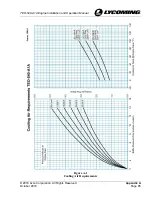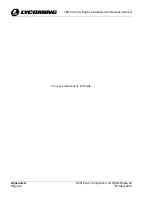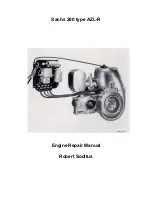
© 2018 Avco Corporation. All Rights Reserved
Engine Preservation and Storage
October 2018
Page 77
TEO-540-A1A Engine Installation and Operation Manual
ENGINE PRESERVATION AND STORAGE
Engine Corrosion and Prevention
Engines in aircraft that are not flown for at least 1 continuous hour within 30 days could be prone to
corrosion. Engine corrosion occurs when moisture from the air and products of combustion mix to
cause corrosion on cylinder walls and bearing surfaces when the aircraft is not used.
Corrosion rates can increase because of variable factors such as environmental conditions (humidity,
salt air in ocean areas), seasonal changes, and engine usage.
Since conditions can change, the corrosion rate can change. Aircraft operated close to oceans, lakes,
and rivers and in humid regions have a greater need for engine preservation than engines operated in
arid regions. In regions of high humidity, corrosion can be found on cylinder walls of new
inoperative engines in as little as 2 days.
The best way to decrease the risk of engine corrosion is for the aircraft to be in flight at least
every 30 days for at least 1 continuous hour at oil temperatures between 180°F to 200°F (80°C
to 93°C),
depending on location and storage conditions. This continuous 1 hour of operation does
not include taxi, take-off and landing time. If the engine cannot be operated at the recommended oil
temperatures, speak with the aircraft manufacturer about the use of oil cooler winterization plates.
Because climate conditions are different in various geographic areas, Lycoming Engines only can
give general recommendations for corrosion prevention. The owner and operator must take into
account the following factors for setting a rust and corrosion prevention maintenance schedule for
the engine:
•
Environmental conditions, especially humidity
•
Frequency of flight
•
Salt spray from the ocean
•
Duration of flights
•
Size of the oil cooler system for the engine and airframe installation. (If the oil cooler system
is not the correct size, it can cause the engine to overheat or operate below the minimum
temperatures.) Low temperature operation can cause a build-up of water and acids
For operation at the correct temperature:
•
Make sure the aircraft temperature gages are correct.
•
Examine the condition of cooling air baffles. There must not be any blockage.
•
Make sure the baffles are the correct fit for maximum cooling air flow.
•
Complete the “Oil Change Procedure” at the recommended intervals per Chapter 12-10 in the
TEO-540-A1A Engine Maintenance Manual
•
Examine the cylinders for corrosion in engines that are stored in humid conditions and/or in
flight less than once a week.
Lycoming Engines’ recommends compliance with the engine preservation guidelines herein. Active
aircraft are flown at least 1 continuous hour at least once within 30 days. Stored aircraft are not in
flight for 31 to 60 days.
















































